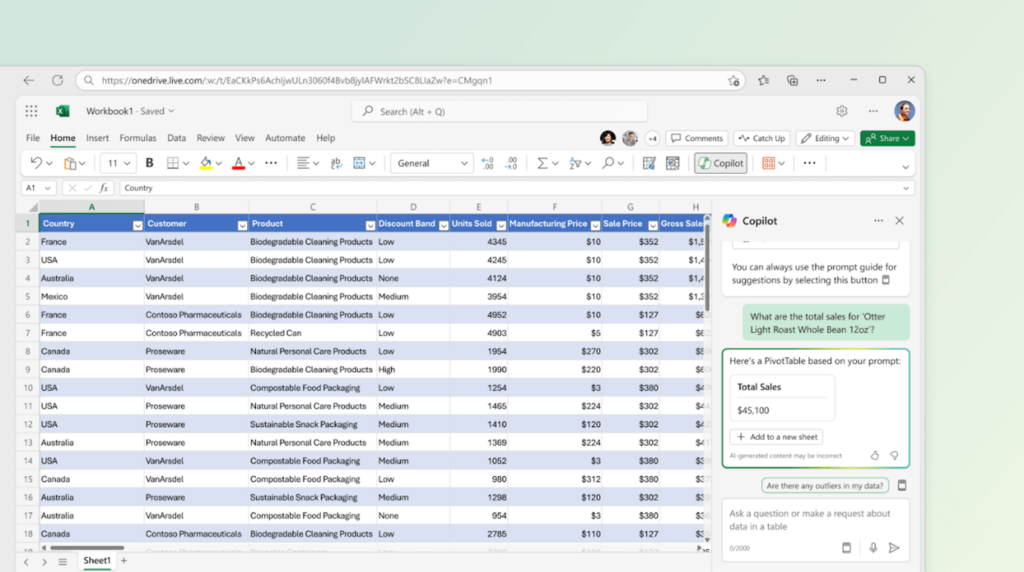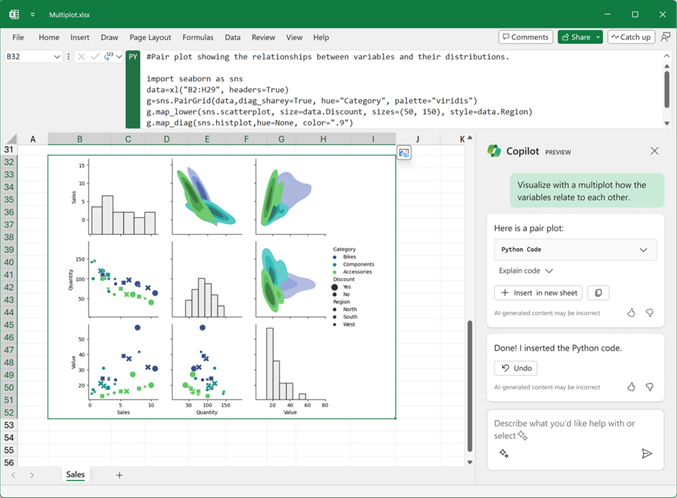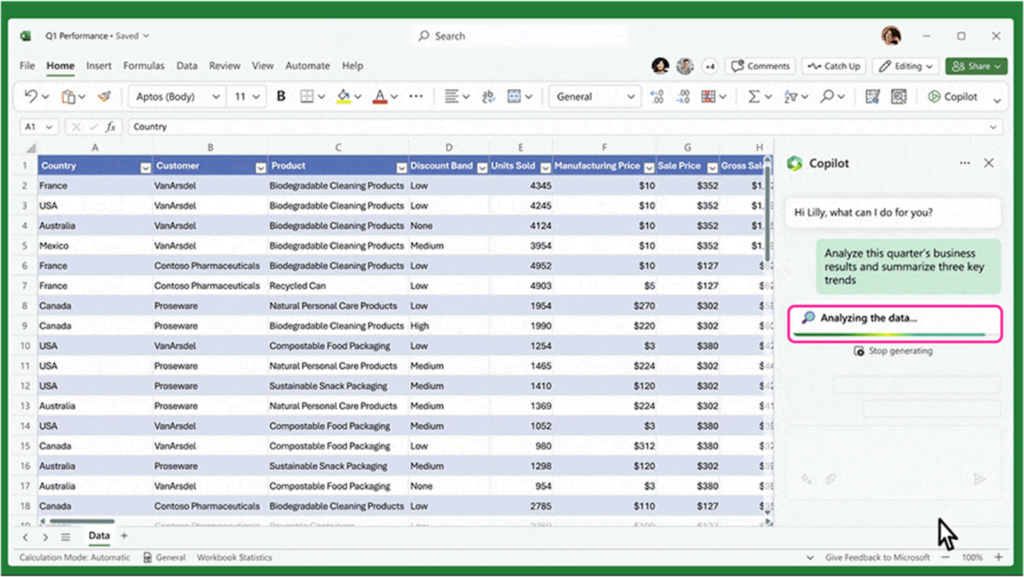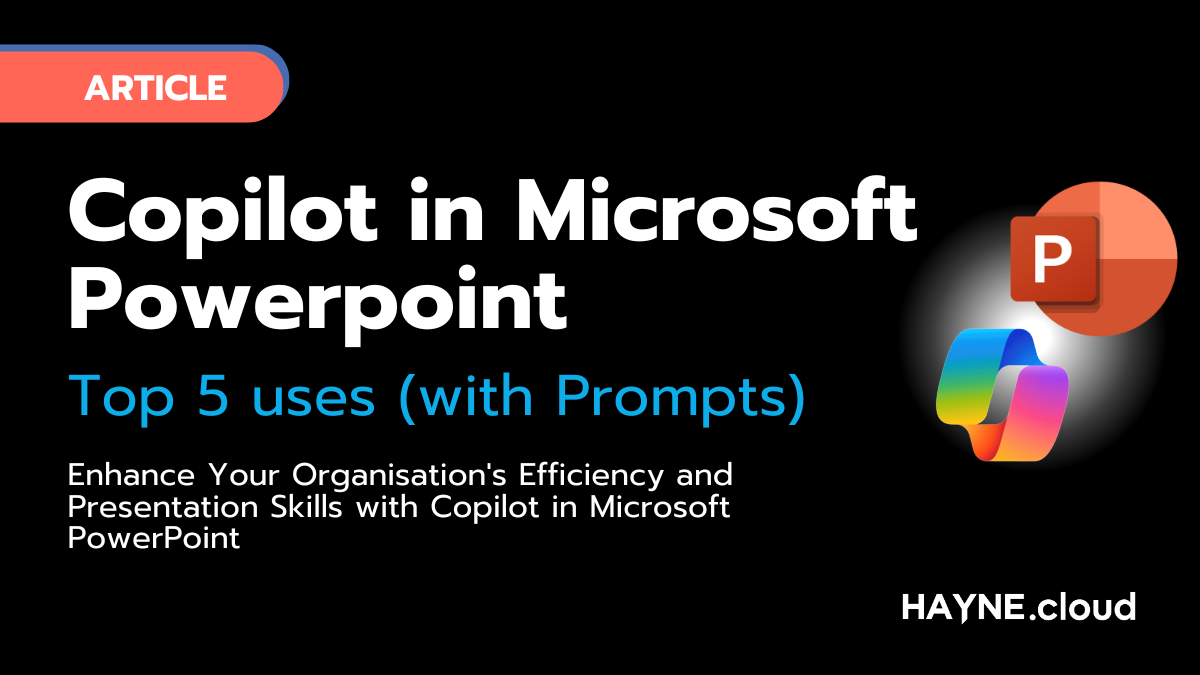Microsoft Excel is one of the key applications of the modern workplace. After all, no spreadsheet program can do it quite like Microsoft’s robust classic office program. It is an application in a suite of tools that have remained a constant in the office for decades.
Microsoft has leveraged artificial intelligence to create new features for its classic programs. Microsoft Copilot uses GPT-4 — one of the world’s most advanced AI language models — to help enhance your workplace’s efficiency. And, it can be applied in Microsoft Excel to elevate your spreadsheeting skills to a new level.
In this article, we will show you the top five ways you can utilise Copilot in Microsoft Excel to take advantage of the power of artificial intelligence and boost your productivity and workflow.
Top Copilot in Microsoft Excel Uses
Quickly Create PivotTables
PivotTables are vital to using Microsoft Excel successfully. They let you summarise data and find trends, which can be integral to helping your organisation monitor and find success. But, creating a PivotTable takes time and effort.

You can easily use Copilot for Microsoft Excel to make the process far more simple, letting you create a PivotTable in just a single prompt. All you have to do is tell Copilot that you want it to “Create a PivotTable based on [your chosen data])” and Copilot will create it with ease.
You can simply ask Copilot about a statistic from a dataset and it will contextually make a PivotTable. For example, you can simply just ask “What is the total value of my inventory?”, and Copilot will create a PivotTable with this information.
This will save a considerable amount of time and help you be more productive.
Create Data Visualisations
Data visualisation is key for understanding and processing data visually. After all, numbers and raw data are much harder for the brain to process than charts, graphs, and other data visualisation tools.
Creating a nice-looking visual can take chunks of time from your day with the need to ensure that your chart has both clarity and conveys the information you want it to thoroughly and effectively. This can be a headache. Microsoft Copilot can do this with just a simple prompt.

All you have to do is ask Copilot to visualise whatever you want it to visualise. For example, you could tell it to “Visualise this table of data” and it would do so. Copilot can also go one step further and has the ability to work with data sets such as Python Code, allowing you to display any data that you input in Excel.
Rather than having to fiddle around with parameters to ensure that your visualisation is perfect, Copilot does it instantly.
Discover Trends in Data
Our brains are good at spotting trends in data, but they can also easily overlook the same trends and patterns in data. Some trends are too subtle to be found by the naked eye.

Microsoft Copilot can find all of these trends, ensuring that you’re not going to miss a thing. It can help you find new trends and patterns in a matter of seconds by analysing the data thoroughly and picking out the most effective trends.
All you have to do is ask Copilot to “Analyse [your chosen data] and summarise five key trends” and Copilot will give you a full analysis of your data.
Highlight, Sort and Filter Data
Microsoft Excel spreadsheets can easily become messy and hard to navigate, meaning that finding key information can be a maze. While Excel’s filtering and sorting tools are good, it still takes a while to find what you’re looking for. Copilot can do this in seconds.
Simply just ask Copilot to sort or filter your data in whatever way you’d like, e.g. “Sort this data by cost, lowest to highest”. Much like with anything else in its toolset, Copilot will be able to do so in seconds saving you time and making the whole process just far simpler.
Generate Formula Columns
Formula columns are vital for performing calculations, as they let you turn multiple columns into whole calculations to save you time and effort. But, creating them can still be a finicky process. after Working out the right formulas you need to create a more complex formula column can be a pain.

Microsoft Copilot can take care of this in seconds, generating a formula column to fulfil your needs with a simple prompt. All you need to do is ask Copilot to “make a formula column based on [the specified data]” and Copilot will do so. This will give you a formula column to insert into your spreadsheet.
However, there is also an easier way to do this using Copilot. You can simply click the ‘show suggestions for formula columns’ button, and Copilot will give you suggestions for formula columns that you can use within this spreadsheet — tailored to make your workflow easier.
How to Get Started
Microsoft Copilot is a powerful tool that can truly empower your workflow. With it, you can turn tasks that would take time out of your day into the time that it takes to type a simple sentence. It frees up your time, letting you prioritise the more important tasks.
If you’re looking to get started with Microsoft 365 and Copilot but don’t know where to begin, reach out to our experts at HAYNE.cloud today. We’ll be able to help you get started and help you find your footing in the world of Microsoft 365.
Get in touch with us now and see how we can help.




